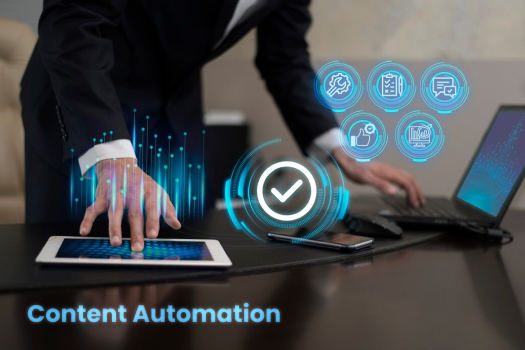Contents
- What is a chatbot?
- What is a chatbot marketing automation?
- Evolution of chatbot automation
- How do businesses benefit from chatbots?
- What is chatbot testing?
- How do you test a chatbot?
- Key functionalities to test in an AI chatbot
- How does chatbot marketing automation help SaaS businesses?
- What is a chatbot testing framework?
- Challenges in chatbot marketing automation
- Conclusion
Chatbots have seen a significant increase in use as more businesses utilize automation and Artificial intelligence (AI) to improve the quality and availability of their services.
According to a recent report, the use of chatbots has increased by over 92% since 2019. With such widespread adoption, it is crucial to ensure that your chatbots are error-free and provide accurate information.
As businesses increasingly harness the power of AI-driven chatbots to improve customer interactions, the importance of thorough testing cannot be overstated. Therefore, chatbot testing is essential for ensuring your virtual assistants function seamlessly.
This blog will discuss chatbot testing, covering everything from the basics to advanced automation techniques.
What is a chatbot?
A chatbot is an AI tool miming human conversation using text or voice. It is used in applications such as customer service. These virtual assistants use NLP and machine learning to understand the user’s query and provide a response.
Chatbots can be implemented in websites, social media, and mobile applications to provide various services, including handling inquiries, taking orders, and making suggestions. Chatbots offer businesses several key benefits, such as:
-
Quickly answering questions
-
Lowering operating costs
-
Reducing human mistakes
-
Providing 24/7 support for multiple users
-
Automating specific tasks
What is a chatbot marketing automation?
Chatbot marketing automation refers to the use of chatbots in marketing processes to automate and streamline communication with customers or leads.
Chatbots can be programmed to engage with website visitors, respond to their queries, provide personalized recommendations, and even assist in making purchases.
Chatbot automation with marketing automation services can also help generate leads by capturing user information and nurturing leads through automated messages. By automating these tasks, chatbots can save time, enhance customer experience, and improve overall efficiency.
Evolution of chatbot automation
The concept of chatbots has been around for decades, with the first notable example being ELIZA, developed at MIT in 1966. However, the field has seen tremendous growth and advancement in recent years:
-
Rule-Based Systems: Initially, chatbots relied on rule-based systems where predefined rules and responses were programmed to handle specific user queries. These chatbots had limited capabilities and could only respond to predefined questions.
-
Natural Language Processing (NLP): With advancements in artificial intelligence and NLP, chatbots have become more sophisticated, allowing them to understand and interpret natural language. This enabled them to have more fluid and human-like conversations with users.
-
Integrations with Machine Learning: Chatbots started integrating machine learning algorithms to improve their ability to learn and adapt to user interactions. This led to more personalized and context-aware responses based on user behavior and preferences.
-
Omni-Channel Integration: Modern chatbot automation evolved to seamlessly integrate across multiple communication channels such as websites, messaging apps, social media, and voice assistants. This allowed businesses to engage with users on various platforms using a consistent chatbot interface.
-
AI-Powered Personalization: Recent advancements in chatbot automation have leveraged AI technology to enable personalized interactions based on user data, behavioral patterns, and past interactions. This has led to more effective marketing automation and customer engagement strategies.
How do businesses benefit from chatbots?
Chatbot marketing automation, managed by a marketing automation specialist, offers numerous advantages to businesses across various industries.
-
24/7 Customer Support: Chatbots provide round-the-clock assistance, ensuring customers can get help whenever needed.
-
Cost Reduction: Since chatbots can handle repetitive questions, the amount of work that human customer support agents need will be less, thus cutting costs.
-
Scalability: Chatbots can engage in many conversations simultaneously, meaning businesses can expand customer support without hiring more people.
-
Improved Customer Experience: Integrated with CRM and marketing automation, quick response times and personalized interactions can enhance customer satisfaction.
-
Data Collection and Analysis: Chatbots can also learn from customers’ interactions and assist the business in better understanding its target market.
-
Lead Generation and Qualification: Chatbots can engage website visitors, collect contact information, and qualify leads before passing them to sales teams.
-
Streamlined Processes: Chatbots can improve efficiency across various business processes by automating appointment scheduling or order tracking tasks and integrating email marketing automation for seamless customer communication.
What is chatbot testing?
Chatbot testing is the process of verifying the functionality of a chatbot and the quality of the interaction it offers to the users. This process involves various aspects, including:
-
Conversational Flow Testing: Ensuring the chatbot maintains logical and coherent conversation across different scenarios.
-
Intent Recognition Testing: Verifying the chatbot accurately identifies user intents from various input formats and phrasings.
-
Response Accuracy Testing: This involves checking whether the chatbot provides correct and relevant information in response to user queries.
-
Error Handling: Testing how the chatbot deals with unexpected inputs, misspellings, or out-of-scope requests.
-
Integration Testing: Ensuring the chatbot works seamlessly with backend systems, databases, and third-party APIs.
-
Performance Testing: Evaluating the chatbot's response time and ability to handle multiple simultaneous conversations.
-
User Experience Testing: Assessing the overall interaction quality, including the chatbot's tone, personality, and ability to engage users effectively.
How do you test a chatbot?
To implement effective chatbot automation testing solutions and ensure a seamless user experience, consider the following steps:
1. Choose the Right Testing Framework
Select a testing framework that supports your chatbot's platform and technology stack. Popular options include:
-
Botium
-
Dialogflow
-
Custom Selenium-based solutions
2. Define Test Scenarios
Create a complete list of test cases covering various user intents, input formats, and conversation flows. Chatbot testing automation can help generate a wide range of scenarios efficiently.
3. Prepare Test Data
Develop datasets that include sample user inputs, expected responses, and any required context or variables.
4. Set Up Test Environment
Configure your testing environment to simulate real-world conditions, including integrations with backend systems and APIs.
5. Implement Test Scripts
Use your chosen framework to develop automated test scripts covering positive and negative test cases.
6. Execute and Monitor Tests
Run automated tests regularly, especially after changes to the chatbot's logic or training data.
7. Analyze Results
Review test results to identify any failures, inconsistencies, or areas for improvement in the chatbot's performance.
8. Continuous Improvement
Use insights from automated testing to refine the chatbot's responses, update training data, and enhance overall functionality.
Key functionalities to test in an AI chatbot
- Speed of Response AI conversational bots must instantly reply upon receiving user inputs for an enhanced customer experience (CX). The bot's response time must be evaluated to ensure quick service.
- Precision in RepliesThe correctness of the answers provided by conversational assistants in response to user queries needs to be assessed thoroughly.
- Handling MistakesEvaluating a chatbot's capability to manage and rectify errors is important. If the bot does not grasp the user's input, it must cleverly pose alternative questions or redirect the user to a human agent for assistance.
- PersonaEnsuring the chatbot's tone and voice are in harmony with the user and the context of the conversation is critical for an outstanding user experience (UX).
- GuidanceTesting the chatbot's guidance system is imperative to prevent users from feeling disoriented during interactions.
- Cognitive AbilitiesAssessing the chatbot’s intelligence is key to guaranteeing its ability to recall information and provide accurate responses based on past interactions or stored data.
- UnderstandingA chatbot should be capable of understanding all forms of user communication, including straightforward requests, casual chatter, idioms, and emoji expressions, to tailor its replies suitably.
- Compatibility Across Platforms and DevicesEnsuring chatbots operate flawlessly across various devices, operating systems, and platforms is vital. Their ability to maintain performance and provide consistent CX regardless of the medium needs thorough testing for multi- and cross-platform compatibility.
Let’s break through your revenue hurdles
We find your primary growth blockers, build expert-led strategies, and provide custom data-driven solutions to help you hit your revenue goals.
How does chatbot marketing automation help SaaS businesses?
Chatbot marketing automation can benefit SaaS businesses in several ways. These benefits include enhanced customer engagement through AI chatbots, which can lead to improved user interaction speed and efficiency.
Chatbots for SaaS businesses also provide round-the-clock support, decreasing the load on customer support teams and automating repetitive tasks, thereby increasing productivity.
Additionally, integrating chatbots into SaaS customer care can enhance customer experience, faster response times, and valuable insights into customer behavior and preferences. Here’s how ChatBots can help in SaaS Marketing Automation:
-
Lead Generation: Chatbots can engage website visitors, qualify leads, and collect contact information, helping SaaS businesses generate new leads and expand their customer base.
-
Customer Onboarding: Chatbots can guide new users through the onboarding process, providing information, answering questions, and assisting with setting up the software, leading to higher user adoption rates and customer satisfaction.
-
Customer Support: Chatbots can provide instant responses to common customer queries, troubleshoot issues, and escalate complex problems to human agents when necessary, resulting in improved customer support and reduced response times.
-
Product Recommendations: By analyzing customer interactions and behavior, chatbots can offer personalized product recommendations, upselling or cross-selling opportunities, and tailored content to enhance the overall customer experience.
-
Feedback Collection: Chatbots can solicit user feedback, conduct surveys, and gather insights that SaaS businesses can use to improve their products, services, and marketing strategies, ultimately fostering customer loyalty and retention.
What is a chatbot testing framework?
A chatbot testing framework is a structured set of processes, tools, and methodologies designed to verify and validate chatbot applications' functionality, performance, and user experience. Here are three key points about chatbot testing frameworks:
-
Functional Testing: Chatbot testing frameworks include tools and approaches for assessing the accuracy and reliability of a chatbot's responses. This involves verifying that the chatbot understands user inputs, interprets them correctly, and provides appropriate and contextually relevant responses.
-
User Experience Testing: These frameworks focus on evaluating the chatbot's overall user experience, including its conversational flow, tone, and user interaction. They may employ techniques such as usability testing and feedback collection to ensure the chatbot delivers a seamless and engaging user experience.
-
Integration Testing: Chatbot testing frameworks also encompass the testing of integrations with various platforms, APIs, and backend systems. This ensures the chatbot functions effectively within the intended environment and seamlessly connects with other applications or databases as needed.
By employing a comprehensive chatbot testing framework, organizations can systematically assess their chatbot's performance, identify and address any issues or weaknesses, and ultimately ensure a high-quality and reliable user experience.
Challenges in chatbot marketing automation
While chatbot marketing automation has many benefits, it also presents some challenges.
One of the key challenges in chatbot marketing automation involves ensuring that chatbot testing solutions are robust and reliable. Here are some of the challenges in chatbot marketing automation:
AI Limitations: While chatbots have advanced their natural language understanding, they can still struggle with complex or ambiguous queries. Additionally, their responses may not always provide the desired result. This can result in a negative user experience.
Integration Complexity: Chatbots must often be integrated with multiple platforms, systems, and databases. This can be a complex process that requires technical expertise and can result in errors or delays.
Data Privacy Concerns: Chatbots handle sensitive user data, such as personal details and payment information. Ensuring this data is secure and compliant is important, but it can be difficult without robust security measures.
User Adoption: Successfully launching a chatbot requires significant effort in building user awareness, gaining trust, and encouraging adoption. Users are hesitant to engage with artificial intelligence, and it may take time to establish a strong user base.
Maintenance and Updates: Chatbots require ongoing maintenance and updates to be effective. Keeping up with market trends and customer requirements can be challenging and requires ongoing investment in development and support.
Conclusion
Overall, we've discussed the key points of testing and improving your AI chatbot, why chatbot testing is important, and the usual challenges in creating a chatbot.
We covered all the necessary information to guarantee that your AI chatbot offers a smooth and effective user experience. Implementing chatbot testing automation can significantly improve the efficiency of your testing process.
Ready to take your chatbot automation testing to the next level? Contact Saffron Edge today for expert guidance on implementing effective chatbot testing strategies tailored to your business needs.
The ultimate marketing toolkit
Frequently asked questions
How often should I test my chatbot?
Regular testing is crucial for maintaining chatbot quality. Implement continuous testing throughout development and conduct thorough testing after significant updates to the chatbot's logic, training data, or integrations. In addition, periodic health checks are performed to ensure ongoing performance and accuracy.
Can I use the same testing approach for all chatbots?
While some testing principles apply universally, the specific approach may vary depending on the chatbot's purpose, complexity, and platform. For example, a simple FAQ bot may require less extensive testing than a complex transactional chatbot integrated with multiple backend systems. Your testing strategy must be per your chatbot's unique requirements and use cases.
What are some key factors to consider when selecting a chatbot testing automation tool?
When choosing a testing automation tool, consider compatibility with the chatbot platform, support for natural language processing testing, robust reporting features, integration capabilities, and scalability. The tool should seamlessly integrate with the chatbot framework, provide NLP testing support, offer comprehensive reporting and analytics, integrate with other tools/platforms, and adapt to evolving chatbot requirements.
How can chatbot testing automation help ensure regulatory compliance and data security?
Chatbot testing automation is instrumental in verifying data security and regulatory compliance. Automated tests ensure that chatbots handle sensitive information securely and comply with data protection regulations. Automation helps mitigate potential security risks and compliance gaps by identifying vulnerabilities and privacy issues. Consistent testing of security protocols, encryption mechanisms, and access controls through automation safeguards against data breaches and compliance violations, enhancing the chatbot's integrity and user trust.
Related Blogs
We explore and publish the latest & most underrated content before it becomes a trend.
6 min read
What is Content Automation? Must-read Automated Content Guide in 2024
By Vibhu Satpaul
Subscribe to Saffron Edge Newsletter!

The ultimate marketing toolkit










